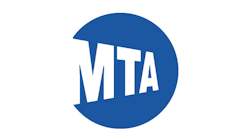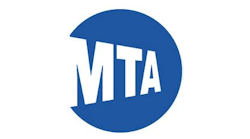New York Metropolitan Transportation Authority (MTA) Chairman Janno Lieber is fond of periodically talking about how major capital projects for either New York City (NYC) Transit, Long Island Rail Road or Metro-North Rail Road come in ahead of schedule and below budget. This is a perfect example of double speak. There is always an agreed upon baseline construction schedule between the MTA and the construction contractor.
When a capital improvement project reaches beneficial use or substantial completion and goes into transit service to the benefit of riders, it is usually 98 percent complete. The two percent remaining work usually does not impact the ability of the MTA in placing this investment into transit service. There may also be outstanding receipt of maintenance manuals for any project component worth $5,000 or more (This is a legal requirement for any capital improvement project funded by a Federal Transit Administration (FTA) grant).
There needs to be a complete inspection and acceptance known as a punch list of all project components. Depending upon the complexity of the project, there could be hundreds to several thousand of individual project components. This is to insure they were built to the projects design and engineering specifications. Contractors may submit requests for reimbursement for change orders, which were not part of the original contract, or delay claims against the MTA for inadequate track outages or insufficient MTA Force Account (MTA employee support) necessary for completion of work according to the agreed upon master project construction schedule.
The MTA may file claims for financial credits against a contractor for not supplying sufficient workers to complete a project, based upon the agreed upon master construction schedule or a reduction in project scope of work. All of this has to be negotiated between the MTA and contractor before a final resolution is reached. After all the above is completed, the MTA will release contract renegotiation.
This is the final payment to the contractor, which represents 100 percent completion of any project. Depending upon the complexity of any capital project, the timeline between 98 percent beneficial use or substantial completion and actual 100 percent completion can average from six months to a year or more.
The MTA will periodically claim a project has come in below the original forecasted budget. What they neglect to tell you is this is the cost accounted for on the capital side of the agency budget ledger. The cost of debt service payments, which can last years, if not decades, is hidden on the operating side of the agency budget ledger.
If you are honest and above board, you must add both the capital expenditure and long term annual debt service payments on the operating side of the financial ledger. This is the only way you can determine the real final cost of any capital improvement project.
Transparency on how the MTA finances the capital program needs to be above board and not hidden. Commuters, taxpayers, transit advocates, funding agencies such as NYC, New York State (NYS) and FTA, MTA Board members, NYC and NYS Comptrollers, MTA, FTA and MTA Office of Inspector General, elected officials, transportation reporters and newspaper editorial boards deserve nothing less.

Larry Penner
Larry Penner is a transportation advocate, historian and writer who previously served as a former director for the Federal Transit Administration Region 2 New York Office of Operations and Program Management. This included the development, review, approval and oversight for billions in capital projects and programs for New Jersey Transit, New York Metropolitan Transportation Authority, NYC Transit bus, subway and Staten Island Railway, Long Island and Metro North railroads, MTA Bus, NYCDOT Staten Island Ferry along with 30 other transit agencies in New York and New Jersey.



